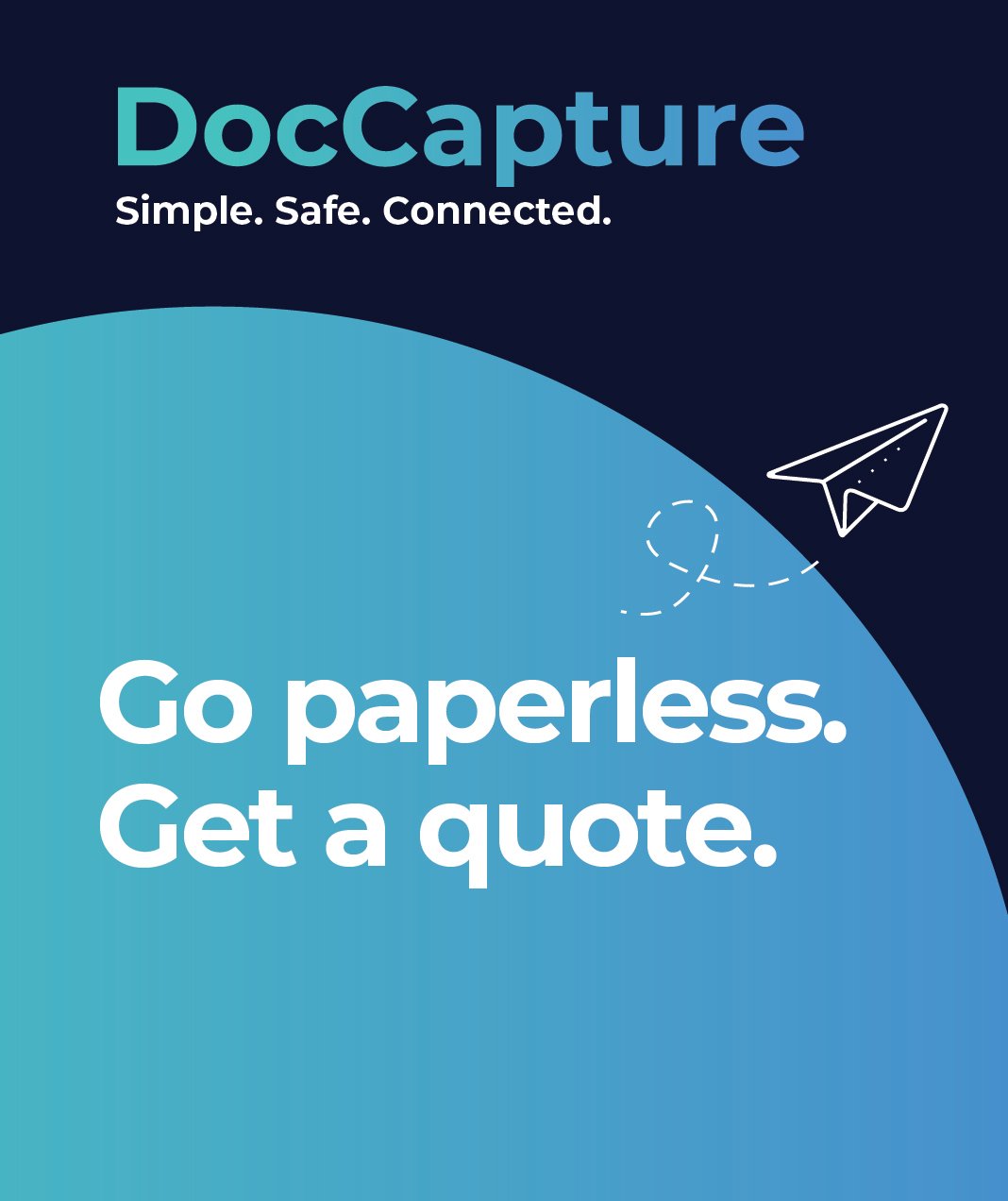Navigating GDPR and HIPAA: The Role of Digital Document Management
Table of contents
HR teams manage a vast amount of sensitive employee information, from personal details and contracts to medical records and performance evaluations. Regulations like GDPR in Europe and HIPAA in the U.S. set strict guidelines on how this data should be handled, stored, and protected.
Failing to comply can lead to heavy fines, legal trouble, and reputational damage. GDPR, for example, enforces rules on data privacy and gives employees the right to access or delete their records. HIPAA ensures that medical-related employee information remains confidential and secure. The challenge for HR professionals is keeping up with these regulations while handling thousands of documents—many of which are still in paper form.
This is where document scanning comes in. By digitizing HR records, companies can strengthen security, improve compliance, and streamline operations. Before diving into the benefits, let’s break down the key compliance challenges HR teams face.
The Compliance Challenges for HR Teams
HR departments deal with a constant influx of employee records, and managing these documents while staying compliant with GDPR and HIPAA is no small task. Here are three major challenges they face:
Managing Large Volumes of Records
Every employee generates a trail of paperwork—employment contracts, tax forms, medical leave requests, performance reviews, and more. Many HR teams still rely on physical storage, making retrieval slow and increasing the risk of lost or misfiled documents. This becomes an even bigger issue for companies with multiple office locations.
Learn more about scanning HR documents.
Ensuring Data Security
HR files contain highly sensitive information, making them prime targets for unauthorized access or data breaches. GDPR requires strict data protection measures, and HIPAA mandates secure handling of health-related records. Physical files are vulnerable to theft, damage, or unauthorized viewing, while unsecured digital files can be hacked if not properly protected.
Keeping Up with Changing Regulations
Laws around data privacy and record-keeping continue to evolve. HR teams must stay updated on retention policies—such as GDPR’s requirement to delete personal data once it's no longer needed. Without an efficient system, ensuring compliance across all employee records can quickly become overwhelming.
Read more about digital record-keeping for HR.
Document scanning helps solve these challenges by transforming paper-based HR records into secure, manageable digital files. Let’s explore how it supports GDPR and HIPAA compliance.
How Document Scanning Supports GDPR & HIPAA Compliance
Switching from paper to digital records does more than just clear up filing cabinets—it strengthens security, improves access control, and simplifies compliance with GDPR and HIPAA. Here’s how document scanning helps HR teams meet regulatory requirements:
Security & Access Control
Digital HR records can be encrypted, password-protected, and restricted to authorized personnel only. Unlike physical files that can be misplaced or accessed without a trace, scanned documents offer:
- Encryption: Ensures data is unreadable to unauthorized users.
- Access Restrictions: Limits document access based on roles and responsibilities.
- Audit Trails: Tracks who viewed, modified, or shared a file, which is critical for compliance reporting.
This level of security aligns with GDPR’s requirement to protect personal data and HIPAA’s standards for safeguarding medical records.
Data Retention & Deletion Compliance
Both GDPR and HIPAA have strict guidelines on how long HR records should be kept and when they must be deleted. Manually tracking retention periods for paper documents is nearly impossible, but digital systems can automate this process.
With document scanning and digital record-keeping, HR teams can:
- Set automatic retention schedules based on legal requirements.
- Ensure timely deletion of records when they’re no longer needed.
- Provide proof of compliance if audited.
See how HR teams are digitizing employee files.
Disaster Recovery & Business Continuity
Fires, floods, or accidental loss can destroy years of employee records in an instant. Digitizing HR documents ensures critical files are backed up and recoverable. Cloud storage and offsite backups protect records from physical damage, meeting HIPAA’s requirement for data availability and GDPR’s mandate for security measures.
HR teams that adopt document scanning don’t just improve compliance—they also gain operational benefits that make their jobs easier. Let’s explore those next.
Operational Benefits of Going Digital
Beyond compliance, document scanning makes HR workflows faster, more efficient, and cost-effective. Here’s how digitizing records improves daily operations:
Efficiency & Cost Reduction
Paper-based HR processes are slow and resource-intensive. Searching for a single document in a filing cabinet wastes valuable time, and physical storage costs add up. Digital files eliminate these inefficiencies by allowing instant retrieval through keyword searches. Benefits include:
- Less time spent on manual paperwork – HR staff can focus on more strategic tasks.
- Reduced physical storage costs – No need for filing cabinets or offsite document storage.
- Faster document retrieval – Access records in seconds instead of digging through folders.
Seamless System Integration
Modern HR departments rely on HRIS (Human Resource Information Systems) to manage employee data. A well-implemented document scanning solution integrates with these systems, allowing digital files to be linked to employee profiles. This enables:
- Quick access to records within HR platforms.
- Automated workflows for approvals and compliance checks.
- Easier sharing of documents across departments while maintaining security.
Learn how HR teams streamline digital record-keeping.
Scalability for Future Growth
As companies expand, so does their paperwork. A digital document management system grows with the business, making compliance and record-keeping easier to handle. With scanned documents, HR teams can:
- Scale operations without increasing storage space.
- Easily update policies and procedures without reprinting forms.
- Adapt to new compliance regulations without overhauling manual processes.
The key to reaping these benefits is choosing the right document scanning provider. Let’s look at what HR teams should consider when selecting a solution.
Choosing the Right Document Scanning Solution
Not all document scanning services are built for HR compliance. To meet GDPR and HIPAA requirements while improving efficiency, HR teams should look for a solution that offers:
Security & Compliance Features
Since HR records contain highly sensitive data, security should be the top priority. A reliable scanning provider should offer:
- Encryption for both stored and transmitted files.
- Access controls to restrict who can view and edit documents.
- Audit trails to track every action taken on a file.
- Automated retention and deletion policies to align with compliance requirements.
Seamless Integration with HR Systems
The best scanning solutions work with existing HRIS platforms, payroll systems, and compliance tools. This ensures:
- Easy access to digitized files within HR software.
- Automated workflows that eliminate manual data entry.
- Consistent compliance tracking across all employee records.
How DocCapture Ensures GDPR & HIPAA Compliance
DocCapture specializes in secure document scanning for HR departments, offering:
- Advanced security protocols to protect sensitive employee data.
- Compliance-focused scanning processes that align with GDPR and HIPAA.
- Seamless integration with popular HRIS and compliance platforms.
Explore DocCapture’s HR Document Scanning Services.
By choosing the right document scanning partner, HR teams can safeguard employee records, maintain compliance, and work more efficiently.
Conclusion
HR compliance with GDPR and HIPAA isn’t just about avoiding fines—it’s about protecting sensitive employee information while improving efficiency. Document scanning plays a critical role in securing records, reducing manual workload, and ensuring that HR teams can easily meet regulatory requirements.
By digitizing employee files, companies can:
- Strengthen data security with encryption and access controls.
- Stay compliant with automated retention and deletion policies.
- Reduce costs by eliminating physical storage and manual processes.
- Improve efficiency with quick document retrieval and seamless system integration.
DocCapture provides secure, compliant document scanning services designed for HR teams. Whether you need to digitize existing records or implement a long-term document management strategy, we can help.
Fill out our "Get a Quote" form to learn how we can support your HR compliance needs.
Share this
You May Also Like
These Related Stories

Navigating GDPR & HIPAA: The Role of Digital Document Management in HR

Navigating Regulatory Changes with Document Solutions in HR

